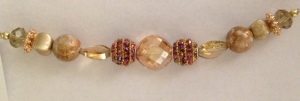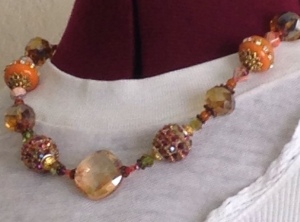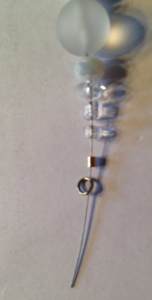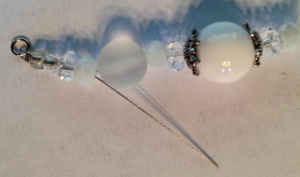Thanksgiving is upon us again and time to celebrate the bounty in our lives. I want to express my thanks and gratitude to all my readers and hope you have a wonderful holiday season this year.
We repeat the tradition of eating turkey, pumpkin pie and other goodies on this special day. Every year, we fall into the same pattern. Hopefully, it is a good design. However…
If you feel your turkey-making skills could use some help, don’t forget to check out Doc Kitchen’s posts on how to make great turkey and gravy every time. But I digress…
This post is not about food but about the importance of pattern.
What is pattern? As a verb: decorate with a recurring design or give a regular or intelligible form to.
The world is full of patterns. Anything can be or have a pattern. Even habits can be a pattern- we repeat them over and over…
Just look at a zebra, a peacock’s tail, a seashell or a snowflake and you know what I mean by a visual pattern. In art, it is the principle of repeating an element in a work. Jewelry, textiles, furniture, architecture, paintings, sculpture, etc. can contain a pattern.
I like pattern and order; it must be the scientist in me. So let’s talk about it in my featured piece.
I like beads and baubles but I also like saving money. I rarely buy at full price as you can always find a deal at the major craft stores. There is usually a weekly discount coupon (up to 40%) that you can sign up for and get texts on your phone in addition to in-store discount deals or clearance sales.
I saw this string of big beads in one of the major craft/fabric stores on sale and I had to have it.
I initially wanted the gold beads for another project (which I will get to one of these days) but the multicolored, rhinestone beads at the center spoke right to my heart. I admit it: I love color. The more color the better. I had some other amber beads and some really cool orange beads from another package that I hadn’t used and thought that I could put them together in a design. Here is what I came up with:
For the center, I naturally choose the one large amber bead. Notice how I chose smaller beads to flank it. This was to emphasize it but also because the end of was hard to fit with the bead caps that were in my current possession. I used two iridescent rust-colored sequins (extra that came with a sequined top purchased years and years ago…) facing each other for a spacer bead effect. Also notice the colors; orange and fuchsia. These colors are found in the next big bead. I am creating a pattern of color.
Since I liked the way it looked on the initial string, I stuck with that pattern and used the next big bead but added a few of my own details to the pattern. Noticed how I choose green beads to flank it to emphasize the green in the bead under the rhinestones. The gold metallic beads also fit into the ends of the rhinestone bead nicely.
The next sequence was used as one of the examples in my last post. Read that if you want extra details. These were the amber beads that I mentioned above. Notice the repetition of the use of the sequins and more orange beads: E beads and peachy iridescent seed beads.
Then I added this sequence to the necklace. Awesome bright orange bead, right? More peachy bicone beads too.
Then as a final segment, I repeated the pattern and used the amber segment above again.
Just so you can look at it again:
To finish it off, I used a length of antique gold chain. One of the reasons was to save the other beads for another fun project!
This is a different bead section but it demonstrates how to make a loop with a jump ring and crimp bead. When you get to the end of your bead segment, you add a crimp bead (small tube at the end) and a jump ring.
After you loop around the jump ring, feed your wire back into the crimp bead and back through several of the other beads on the string.
Then pull on the end of the wire while maintaining the loop until your string of beads is tight together and the loop of wire holding the jump ring is small.
There are all kinds of books and videos on how to perform basic steps if you don’t understand. Then using your crimping tool, you crimp the crimping bead into place. Basically, you smash it down tight on the wire and it holds everything in place.
Then I usually open a link of the chain and link on the jump ring to it instead of opening the jump ring. This is so that the jump ring maintains its tight closure. This way the thin wire doesn’t slip through the opening in the ends of the jump rings.
As an alternative, you can add the bead section directly to the chain but I didn’t have good luck with that- the bead section wanted to twist and didn’t hang as well so I came up with the jump ring idea and it worked much better for me.
Remember: Always twist your jump rings to either side to open. Do not pull ring ends apart, it fatigues the metal and you are more likely to break the jump ring in half. Again, there are a myriad of jewelry how-to sites out there for further explanation.
As a final step, add your clasp to the end of the chain and you are ready to go.
I hope this inspired you. Thanks again for reading!
Next post: Christmas necklace









